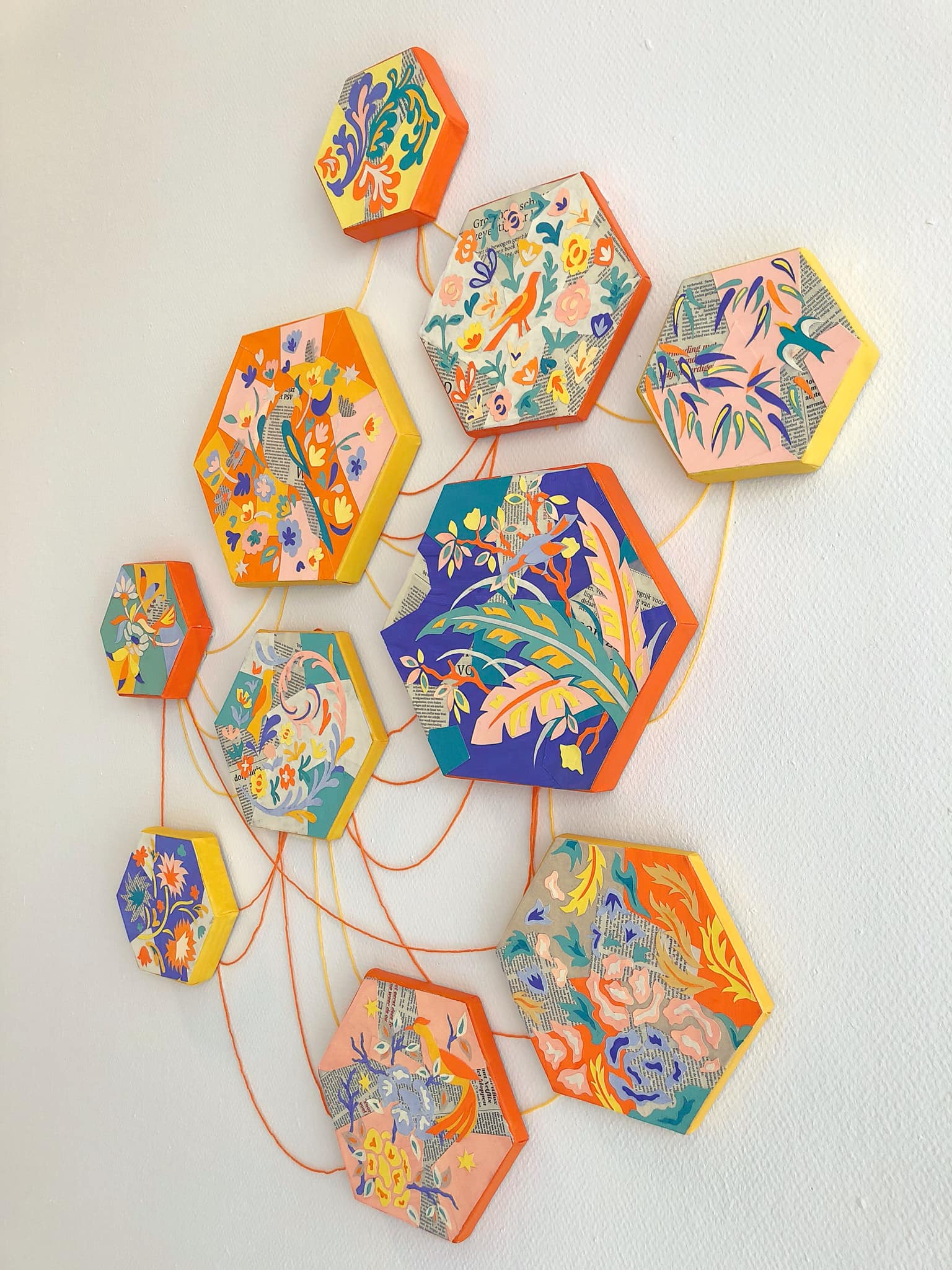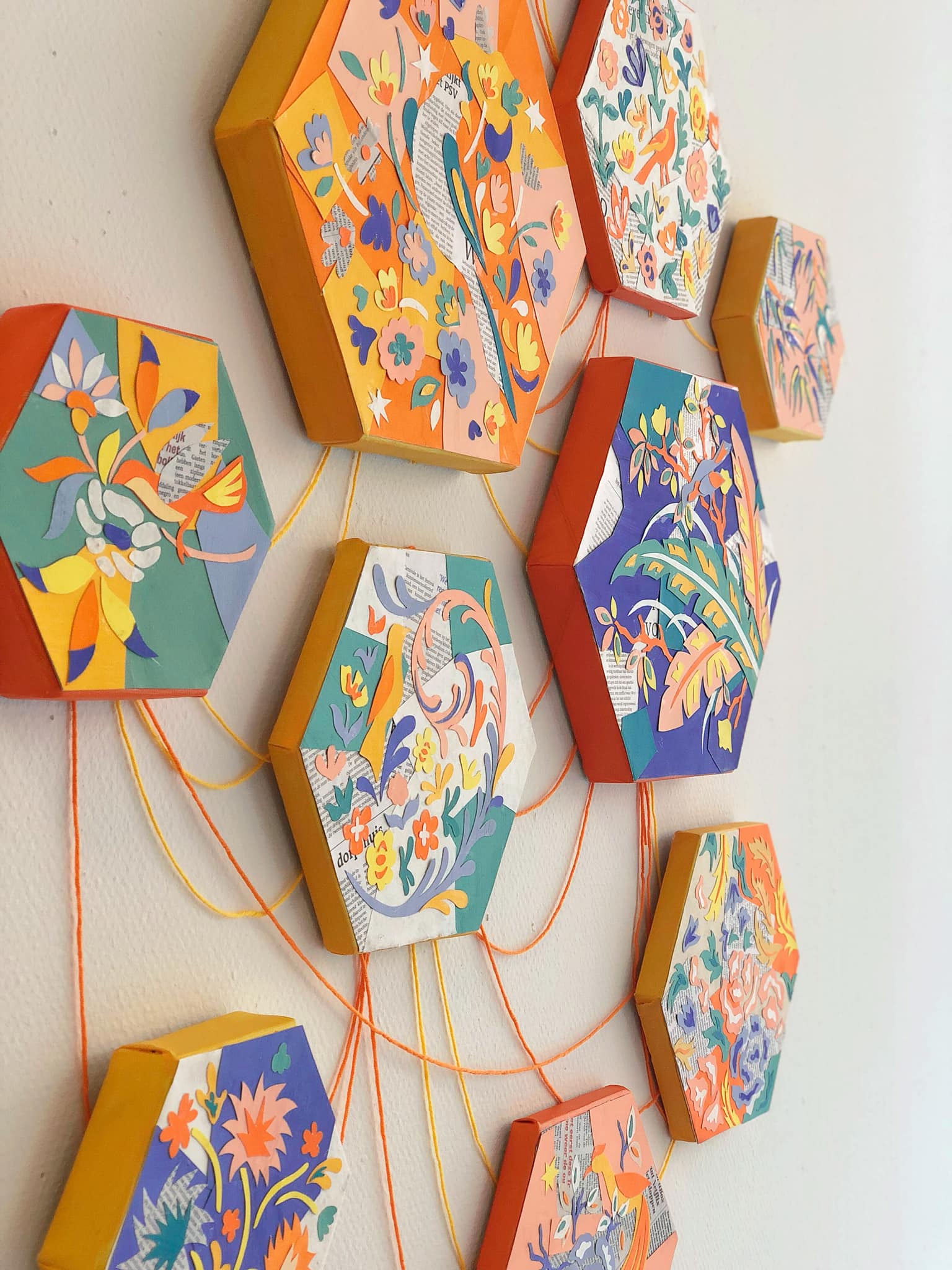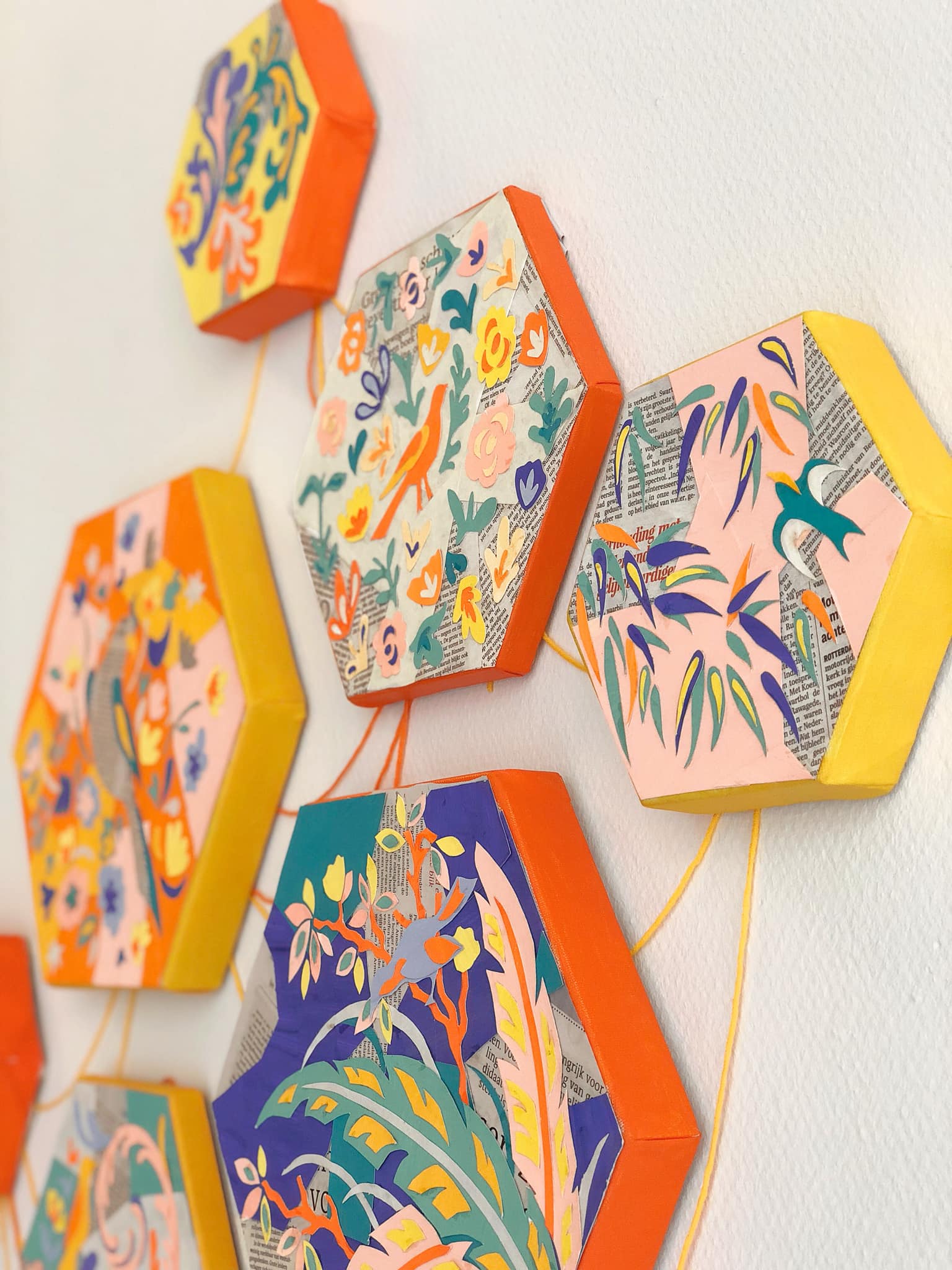_______________________________________________________________________________________________________________________________________________________________________________________________
Home



Material: Gouache and Various kind of Paper on Canvas
For the residency program in Academie Minerva I researched Dutch traditional folk art. The Dutch art, from the Old Masters of the Dutch Golden Age to the Avant-Garde of the 19th & 20th century such as Van Gogh or Mondriaan, has been world-renowned and iconic. On the other hand, during the 19th & 20th century, Vietnamese art (i.e. Academy Art in Western definition) was still in its infancy. Before this period, folk art is the leading art style of Vietnam.
These facts have stimulated my interest and curiosity. I am wondering if Dutch Folk Art and the Vietnamese counterpart have anything in common. The starting point of my project was a trip to Hindeloopen, a small village with 875 inhabitants located next to the IJsselmeer. Mostly known for its folk art, the Hindeloopen art enjoyed its heyday during the 17th century and declined it in the 18th century, making space for other styles of art. Elements of nature such as flowers or plants can be often found in Hindelooper art. Quite so often, a “perches” at the center of the design amidst the flowers. The bird is always looking over his shoulder to keep evil spirits away. These motifs share a lot in common with Vietnamese folk art. Two countries, from two sides of the world, turn out to have interesting things in common.
“The Land Where the Birds Sing” is my attempt to give the Dutch folk art a different look with my art practice. The motifs were sampled, reconstructed and put on various pieces of beehive. Also the Vietnamese motifs are blended in the work. The beehive represents the idea of connecting two different cultures, and finding a common voice between seemingly different arts.
The Land where the Birds Sing - Nguyen Xuan Lam